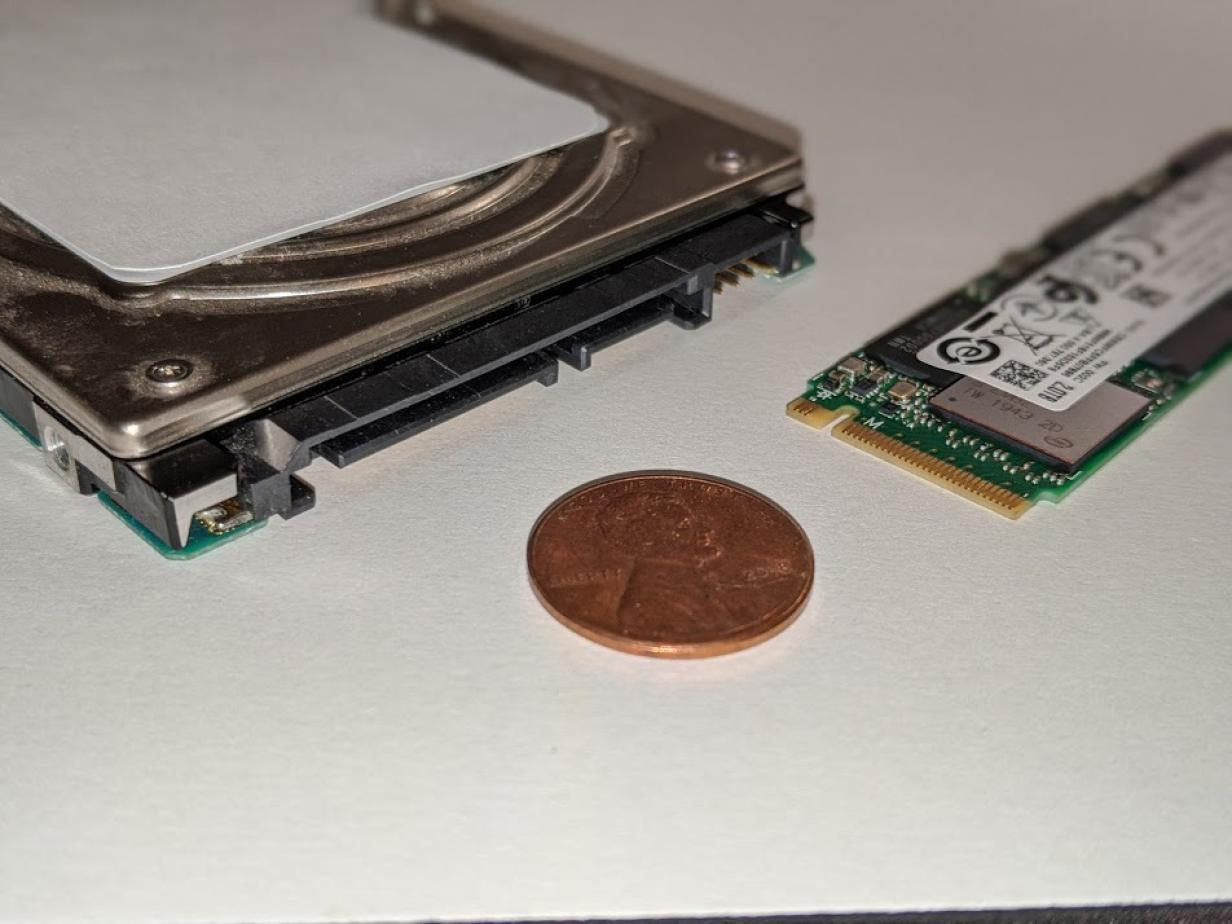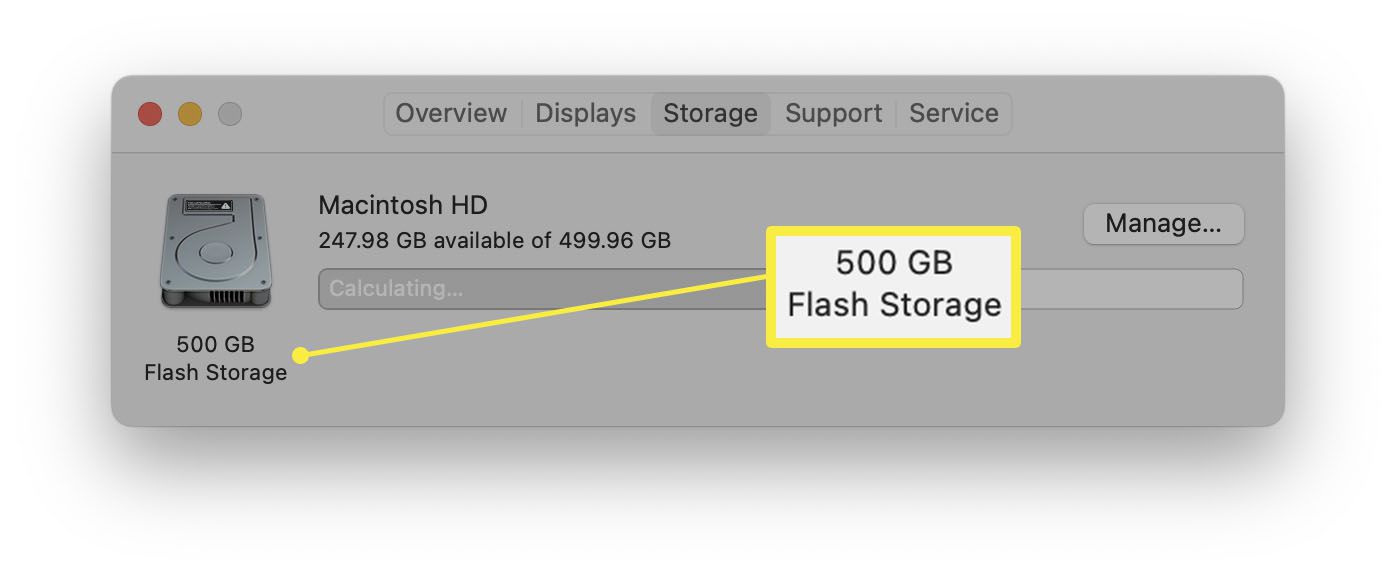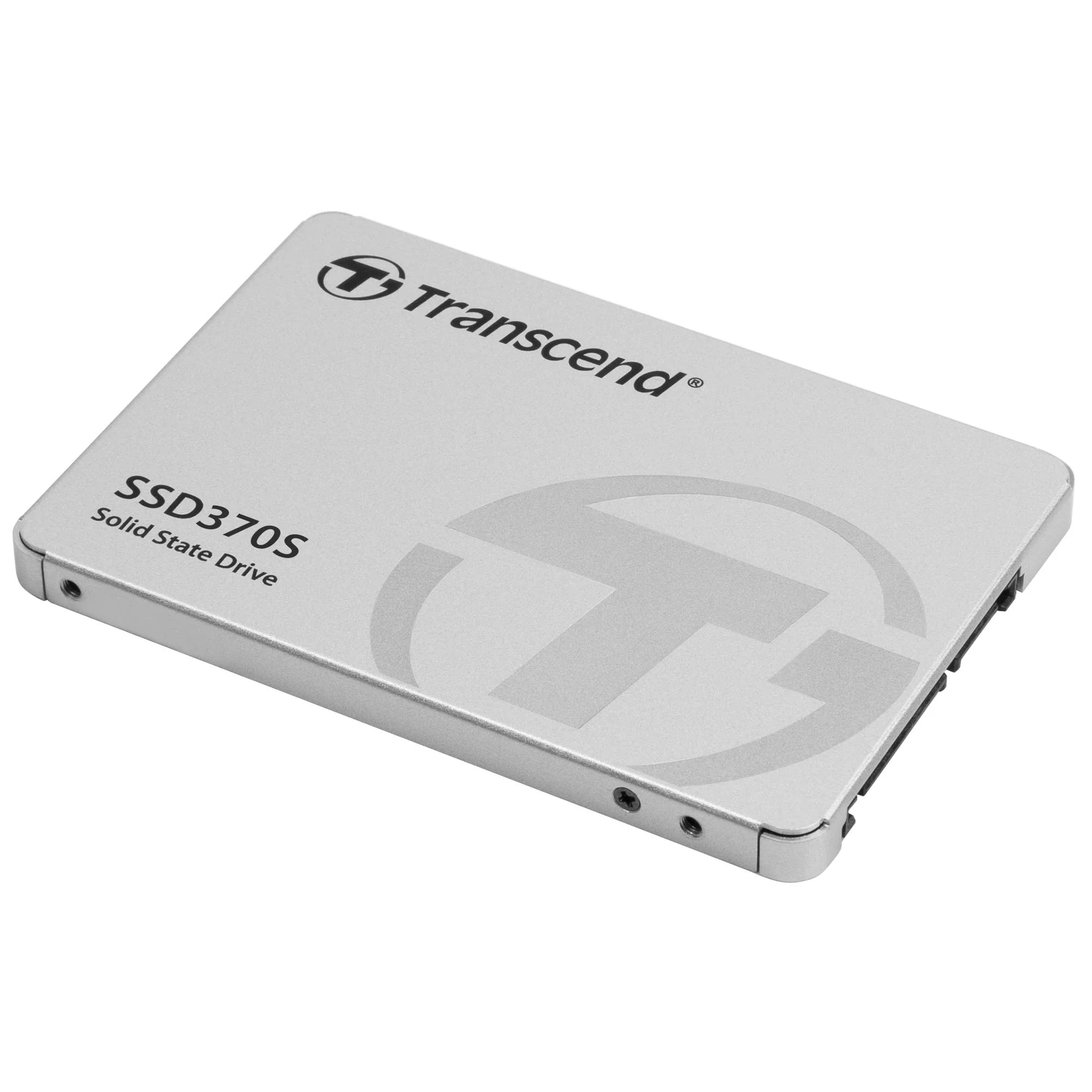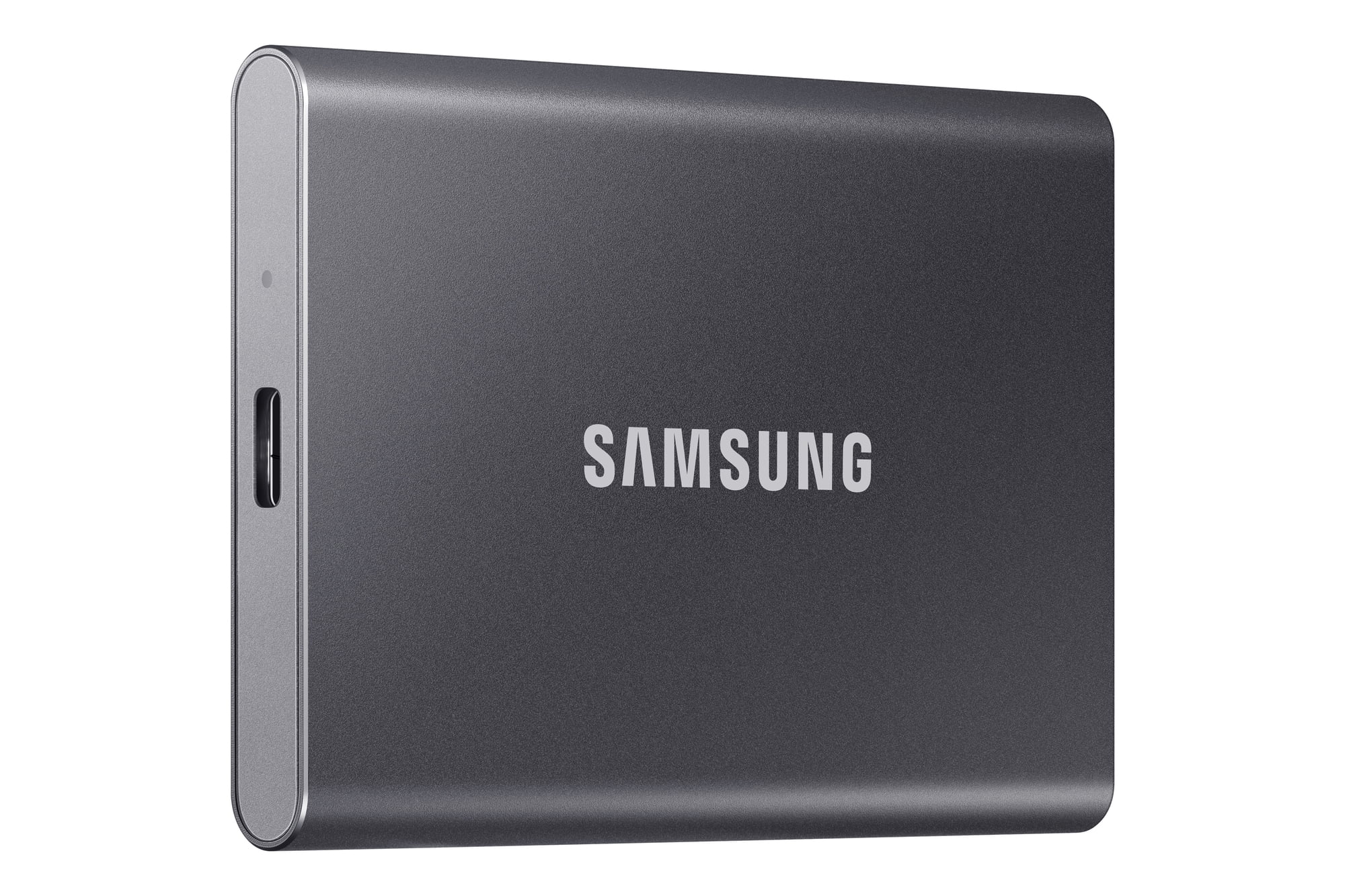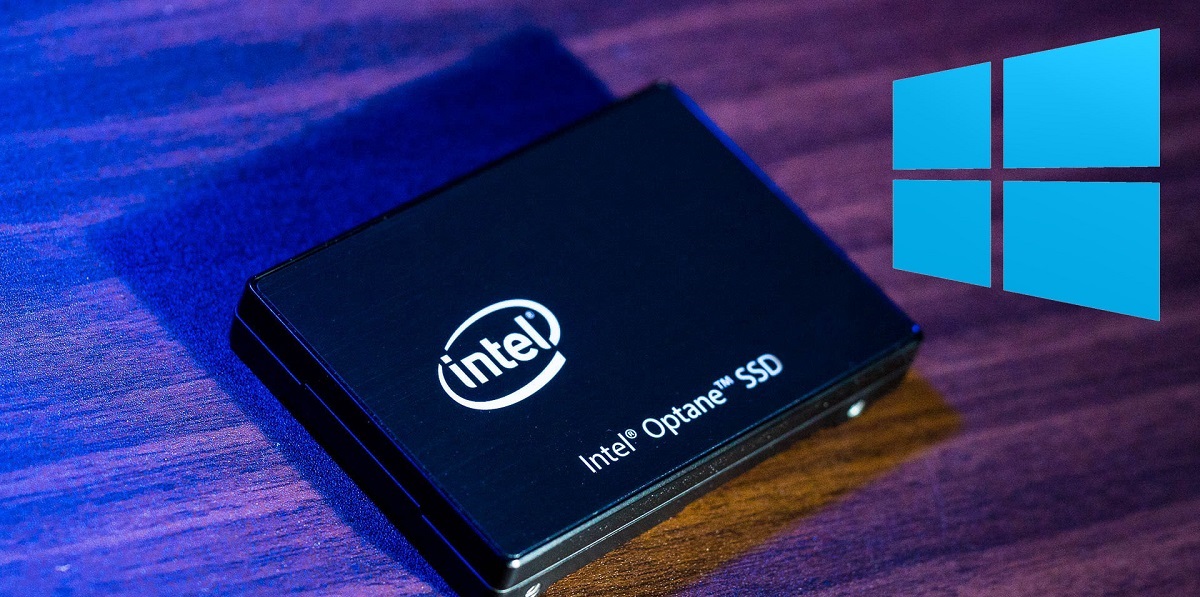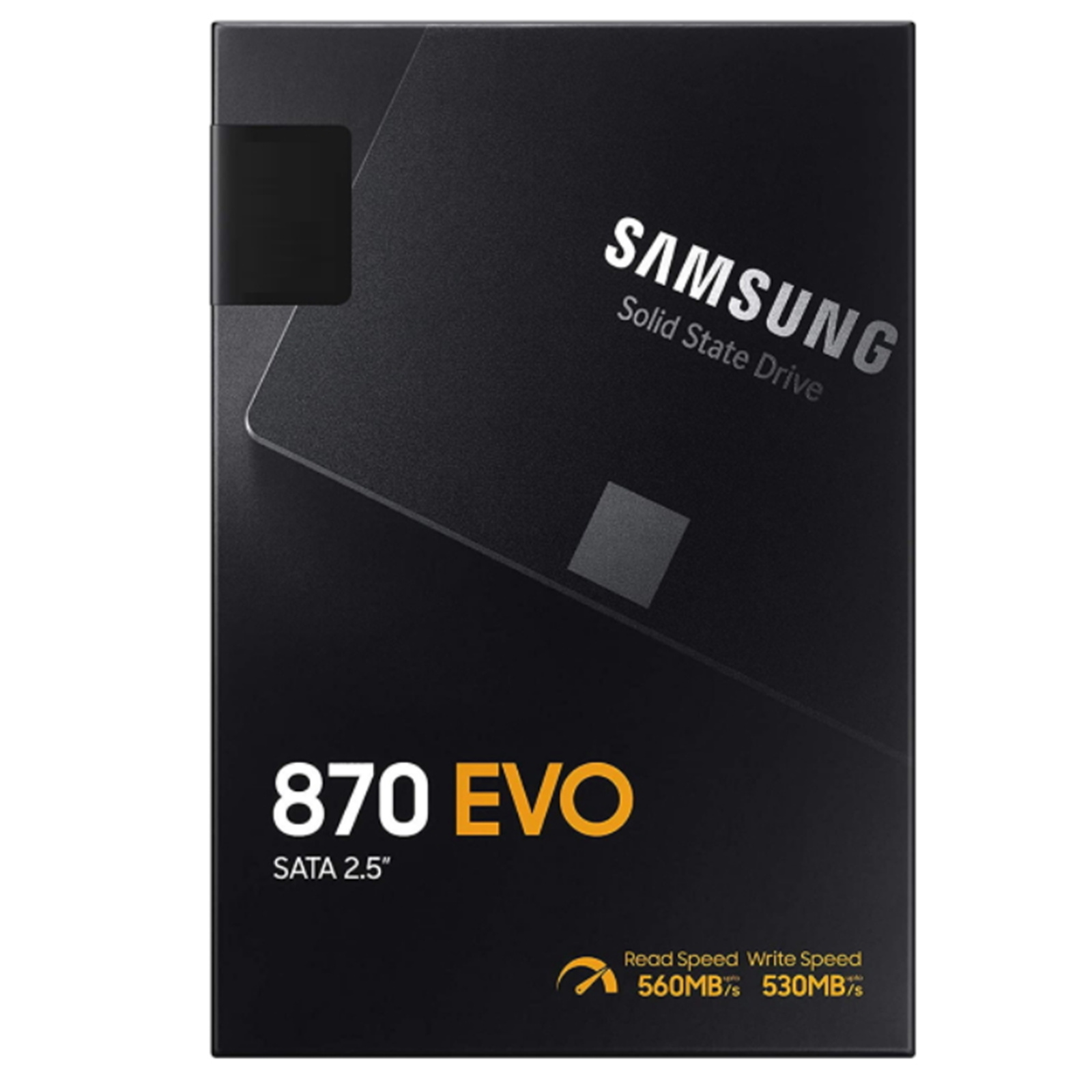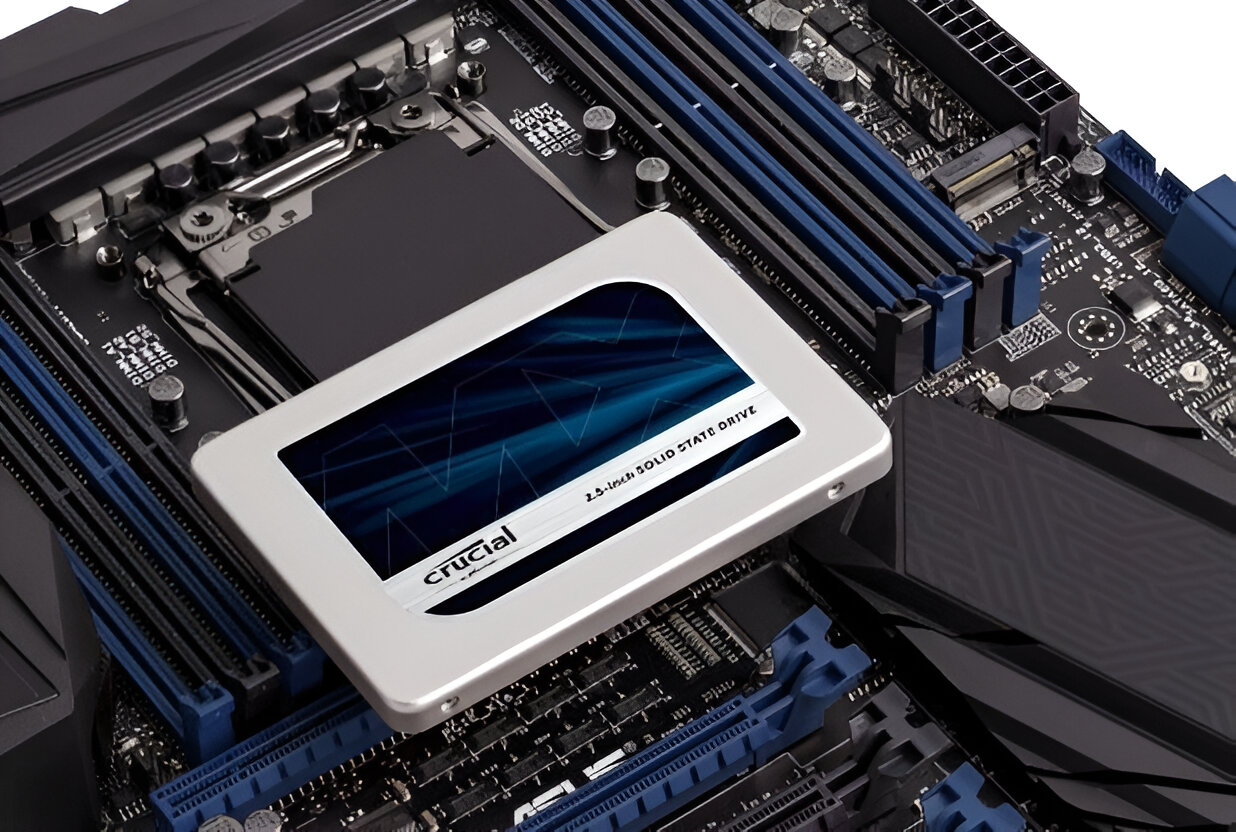Introduction
When it comes to choosing a solid-state drive (SSD) for your Linux system, finding the right size is crucial. The size of your SSD will determine how much storage space you have for your operating system, applications, and data. However, determining the ideal size can be a bit challenging.
In this article, we will explore the factors you need to consider when selecting an SSD size for your Linux system. Whether you are a home user, a software developer, a gamer, or a server administrator, we will provide guidelines to help you make an informed decision.
Before diving into the specific recommendations for SSD sizes, it’s important to understand that the requirements may vary depending on your use case. What may be sufficient for one user might not be enough for another.
In the following sections, we will consider different aspects such as operating system requirements, types of SSDs, and recommended sizes for different user categories. By weighing these factors, you can select the SSD size that suits your needs and provides optimal performance.
Now, let’s explore the factors you need to consider when choosing the right size SSD for your Linux system.
Factors to Consider
When determining the size of an SSD for your Linux system, there are several factors to consider. These factors can help you make an informed decision based on your specific needs and requirements. Let’s take a look at them:
1. Storage Needs: One of the primary considerations is the amount of storage space you require. Assess your storage needs by considering the size of the operating system, applications, and files you plan to store on the SSD. This will give you an idea of the minimum storage capacity you should look for.
2. Future Growth: It’s prudent to anticipate your future needs and allow for growth. Consider whether you might need additional storage space for future software updates, applications, or larger files. Investing in a slightly larger SSD upfront can save you from the hassle of upgrading down the line.
3. Budget: SSDs with larger storage capacities tend to be more expensive. Set a budget range and prioritize storage needs within that range. Strike a balance between your storage requirements and the price you are willing to pay.
4. Performance: SSDs vary in terms of read and write speeds. Larger SSDs often provide faster performance compared to their smaller counterparts. If speed is crucial for your work or gaming needs, consider opting for a larger SSD.
5. Compatibility: Ensure that the SSD you choose is compatible with your Linux distribution and system requirements. Check the specifications and seek compatibility information from the manufacturer or user reviews to avoid any compatibility issues.
6. Redundancy: If you are concerned about data loss, consider investing in a larger SSD to allow for redundancy. This can be accomplished through techniques such as RAID configurations or regular backups.
By considering these factors, you can narrow down your options and select the right size SSD for your Linux system. Next, we will examine the specific operating system requirements you need to keep in mind.
Operating System Requirements
When choosing the size of an SSD for your Linux system, it’s important to consider the specific requirements of your operating system. Different Linux distributions have varying installation sizes, so understanding these requirements is crucial. Here are a few key points to consider:
1. Installation Size: Linux distributions come in various flavors, each with its own installation size. While some distributions, such as lightweight ones like Lubuntu or Xubuntu, may require around 6-8 GB of space, others like Fedora or Ubuntu may need up to 25 GB or more. It’s essential to check the official documentation or the distribution’s website for the installation size recommendation.
2. Package Management and Updates: Linux distributions use package managers to handle software installations and updates. Depending on the distribution, package managers may require additional disk space for caching files during updates. Allocating some extra space to accommodate these temporary files is advisable to ensure smooth updates without running out of storage.
3. Swap Space: Swap space, also known as virtual memory, is used by the operating system when physical memory (RAM) is in high demand. The amount of swap space required can vary based on factors like system usage and memory capacity. It’s a good practice to allocate some additional space for swap, especially if you have limited physical memory.
4. Storage Efficiency: Modern Linux distributions employ various mechanisms to optimize disk space usage. For example, techniques like compression, deduplication, and efficient package management can help minimize the overall storage requirements. However, these optimizations may not be applicable to all distributions or setups, so it’s important to consider them when estimating the required SSD size.
Considering these operating system requirements is vital when determining the appropriate size for your SSD. It ensures that you have enough space for the operating system, updates, and other essential components without running into storage constraints. Next, let’s explore the different types of solid-state drives available in the market.
Types of Solid State Drives
When selecting an SSD for your Linux system, understanding the different types available in the market can help you make an informed choice. Let’s explore the two main types of solid-state drives:
1. SATA SSDs: Serial ATA (SATA) SSDs are the most common type of solid-state drives available. They connect to the system via a SATA interface, similar to traditional hard drives. SATA SSDs offer significant performance improvements over mechanical hard drives, but they are limited by the maximum transfer speed of the SATA interface. However, for most home users and software developers, SATA SSDs provide sufficient performance and are available in various capacities.
2. PCIe/NVMe SSDs: PCIe (Peripheral Component Interconnect Express) or NVMe (Non-Volatile Memory Express) SSDs are the latest generation of solid-state drives. They connect directly to the PCIe slot on the motherboard, bypassing the limitations of the SATA interface. This results in significantly faster read and write speeds, making PCIe/NVMe SSDs ideal for power users, gamers, and server environments that demand high-performance storage. However, it’s important to note that not all systems support PCIe/NVMe SSDs, so compatibility should be checked before investing in this type of drive.
Both SATA SSDs and PCIe/NVMe SSDs can provide reliable performance and faster data access compared to traditional hard drives. Your choice between the two will depend on the compatibility of your system, budget considerations, and the level of performance you require.
Now that we have covered the types of SSDs available, let’s move on to discussing the guidelines for storage capacity in the next section.
Storage Capacity Guidelines
Choosing the right storage capacity for your solid-state drive (SSD) is crucial to ensure that you have enough space for your operating system, applications, and files. While the specific capacity requirements will vary based on individual needs, here are some general guidelines to consider:
1. Operating System Size: The first step is to determine the amount of space needed for your operating system. Depending on the Linux distribution you choose, the installation size can range from a few gigabytes to over 20 gigabytes. Refer to the documentation or website of your Linux distribution to find the recommended minimum storage requirement.
2. Application and File Storage: Consider the programs and applications you frequently use. Some applications, such as video editors or virtualization software, may require a significant amount of storage space. Additionally, factor in the size of multimedia files, documents, and other personal data you plan to store on your SSD. If you have large storage needs for applications and files, you will need a higher capacity SSD.
3. Future Growth: Allow for future growth when selecting the storage capacity of your SSD. Consider whether you anticipate installing additional applications or storing more files over time. Investing in a larger SSD can provide flexibility and save you from upgrading too soon.
4. Budget: SSDs with larger storage capacities generally come at a higher cost. Determine your budget and prioritize your storage needs within that range. It’s important to strike a balance between the storage capacity you require and the price you can afford.
5. Cloud Storage or External Storage: Alternatively, you can supplement your SSD storage with cloud storage solutions or external drives. If you frequently use cloud services or have external storage options available, you may be able to manage with a smaller SSD capacity.
Remember, these guidelines are general recommendations, and your storage capacity requirements may differ based on your specific use cases and preferences. Consider your unique needs when making a decision.
In the following sections, we will provide recommended SSD sizes for different user categories, including home users, software developers, gamers, and servers. These recommendations will help you determine the ideal SSD capacity based on typical usage scenarios.
Minimal Requirements for Linux Distributions
When it comes to selecting a solid-state drive (SSD) for your Linux system, it’s essential to consider the minimal requirements of the Linux distribution you plan to install. Understanding these requirements will help you ensure that your SSD has sufficient capacity for a smooth and optimal performance. Here are some key factors to consider:
1. Installation Size: Different Linux distributions have varying installation sizes. While lightweight distributions like Lubuntu or Xubuntu may require as little as a few gigabytes, larger distributions like Fedora or Ubuntu may need several gigabytes more. Check the official documentation or the distribution’s website for the specific installation size recommendation.
2. Swap Space: Swap space, also known as virtual memory, is reserved on your disk to supplement the physical RAM of your system. The size of the swap space can vary depending on factors such as the amount of RAM you have and the specific requirements of your Linux distribution. Typically, allocating 1-2 times the amount of physical RAM is considered a good practice.
3. Available RAM: The amount of available RAM can influence the performance of your Linux system. While SSDs can significantly enhance overall system performance, having an adequate amount of RAM is crucial to ensure smooth multitasking and application performance. Consider the RAM requirements of your Linux distribution in conjunction with the storage capacity of your SSD.
4. Package Management: Linux distributions utilize package managers for software installations and updates. These package managers may require additional disk space for caching downloaded files during the installation or update process. It’s a good idea to allocate some extra space to accommodate these temporary files and ensure smooth package management operations.
By considering these minimal requirements, you can gauge the storage capacity needed for your SSD to support your chosen Linux distribution. It’s important to note that these minimal requirements serve as a baseline, and depending on your usage patterns and specific needs, you may want to allocate more storage space for a comfortable computing experience.
In the following sections, we will provide recommended SSD sizes for various user categories, including home users, software developers, gamers, and servers. These recommendations will help you determine the ideal SSD capacity based on typical usage scenarios.
Recommended Size for Home Users
For home users, the recommended size for a solid-state drive (SSD) primarily depends on their usage patterns and storage needs. Here are some guidelines to help you determine the ideal SSD capacity:
1. Basic Usage: If you primarily use your Linux system for basic tasks such as web browsing, email, document editing, and multimedia consumption, a smaller SSD with a capacity between 120GB to 240GB should be sufficient. This size provides ample space for the operating system, essential applications, and some personal files.
2. Moderate Usage: If you engage in more demanding tasks, such as photo or video editing, and have a larger collection of multimedia files, consider a larger SSD with a capacity between 480GB to 1TB. This increased capacity allows for more storage space for applications, files, and additional software development tools if needed.
3. Virtual Machine Usage: If you frequently work with virtual machines or require additional storage for running multiple operating systems concurrently, consider an SSD with a capacity of 1TB or more. The larger capacity will enable you to allocate adequate space for each virtual machine, ensuring smooth performance and ample storage for various applications and files.
4. Cloud Storage and External Drives: If you rely on cloud storage services or have external drives for additional storage options, you may opt for a smaller SSD in the range of 240GB to 480GB. This allows you to allocate space for the operating system, frequently used applications, and files, while relying on cloud or external storage for larger files and infrequently accessed data.
Remember, these recommendations are general guidelines, and the actual SSD capacity you require may vary based on your specific usage patterns and personal preferences. It’s always beneficial to leave some room for future growth and to have a buffer for any unexpected storage needs.
In the next section, we will discuss the recommended SSD sizes for software developers, taking into account their specific requirements for development environments and tools.
Recommended Size for Software Developers
For software developers, having an optimal solid-state drive (SSD) size is crucial to accommodate development environments, tools, and projects. Here are some recommended SSD sizes for software developers based on their specific requirements:
1. Small Projects: If you primarily work on small projects, such as scripting, web development, or basic application development, an SSD with a capacity of 240GB to 480GB should be sufficient. This size allows you to install the necessary development tools, libraries, compilers, and IDEs while leaving room for project files and resources.
2. Medium-Sized Projects: If you work on larger projects or require multiple development environments, consider opting for an SSD with a capacity between 480GB to 1TB. This size allows you to install multiple programming languages, frameworks, development tools, and additional software packages without worrying about storage limitations.
3. Large-Scale Projects: If you are involved in enterprise-level software development or work extensively with complex projects, a larger SSD with a capacity of 1TB or more is recommended. This size provides ample space to accommodate development environments, frameworks, tools, databases, and project dependencies, ensuring smooth performance and efficient storage management.
4. Virtual Machines: If you frequently utilize virtual machines for software testing, cross-platform development, or running multiple environments concurrently, consider a larger SSD with a capacity of 1TB or more. This size allows you to allocate sufficient space for each virtual machine, as well as the necessary development tools and files.
It’s important to consider that software development requirements may vary depending on your specific field, programming languages, and project sizes. Assess your needs and estimate the amount of storage space required to comfortably accommodate your development workflow.
Additionally, consider the usage of version control systems and the need for storing code repositories. If you heavily rely on local code repositories, allocate enough space to accommodate your repositories along with their revision history.
In the next section, we will discuss the recommended SSD sizes for gamers, who require ample storage capacity for their extensive game libraries and high-performance requirements.
Recommended Size for Gamers
For gamers, having an adequate solid-state drive (SSD) size is essential to accommodate their extensive game libraries and ensure optimal performance. Here are some recommended SSD sizes for gamers based on their specific requirements:
1. Casual Gamers: If you are a casual gamer, who plays a few games occasionally, an SSD with a capacity of 480GB to 1TB should suffice. This size provides enough space to install your favorite games, along with the operating system and essential applications. It allows for quick loading times and smooth gameplay without worrying about storage limitations.
2. Enthusiast Gamers: If you are an enthusiast gamer who enjoys playing a wide variety of games, including AAA titles or those with large file sizes, consider opting for an SSD with a capacity of 1TB to 2TB. This size provides ample space for a substantial game library, allowing you to install multiple games without the need for frequent uninstallation or juggling storage space.
3. Competitive Gamers: If you engage in competitive gaming or esports, having a high-performance SSD is crucial. Consider opting for a larger SSD with a capacity of 2TB or more. This size allows you to store your game library, applications, and possibly record gameplay videos or streaming sessions without compromising on performance or storage space.
4. Future Expansion: It’s always a good idea to consider future game releases and expansion packs when choosing an SSD size. If you anticipate adding more games to your library, allocating extra storage space can prevent the need for frequent upgrades and ensure you have enough room for new titles without sacrificing performance.
Remember that game file sizes can vary significantly, so it’s essential to evaluate your gaming habits, the types of games you play, and any additional multimedia or gaming-related files you might need to store. While SSDs with larger capacities tend to be more expensive, they offer improved performance and allow for a more extensive game library.
In the next section, we will discuss the recommended SSD sizes for servers, taking into consideration their specific storage and performance requirements.
Recommended Size for Servers
For servers, selecting an optimal solid-state drive (SSD) size is essential to meet the storage and performance requirements of various applications and services. Here are some recommended SSD sizes for servers based on different usage scenarios:
1. Small Business Servers: If you are running a small business server that hosts basic services such as file sharing, local databases, or email, an SSD with a capacity of 500GB to 1TB should be sufficient. This size provides enough space to store critical data, applications, and configurations for small-scale operations.
2. Web Application Servers: If your server primarily hosts web applications or websites, consider an SSD with a capacity of 1TB to 2TB. This size allows you to store the web server software, databases, and static and dynamic content efficiently. It provides room for expanding your web application portfolio and handling increased traffic as your online presence grows.
3. Database Servers: For servers that primarily handle large databases, consider larger SSD sizes ranging from 2TB to 8TB or more. This expanded capacity allows you to store and manage substantial amounts of data, ensuring efficient database operations and quick access to information for your applications.
4. Virtualization Servers: If you use your server for virtualization, running multiple virtual machines simultaneously, consider an SSD with a capacity of 2TB or more. Virtual machines demand significant storage space, especially if they run resource-intensive applications or require substantial operating system installations. With a larger SSD, you can allocate sufficient space to each virtual machine and ensure smooth performance.
It’s vital to consider the specific requirements of your server workload and estimate the amount of storage space needed to accommodate your services, applications, and data. Additionally, factor in any potential future expansion plans or anticipated growth in your server workload to choose an SSD size that allows for scalability and flexibility.
Remember, larger SSD capacities provide ample room for growth and can handle increased data storage demands, but they may come at a higher cost. Consider your budget and balance it with your server’s performance needs to find the most suitable SSD size for your requirements.
In the next section, we will provide a concluding summary of the key points discussed and highlight the importance of considering these SSD size recommendations based on individual needs and usage scenarios.
Conclusion
Choosing the right size for a solid-state drive (SSD) is crucial for optimal performance and storage capacity. Whether you are a home user, software developer, gamer, or server administrator, considering specific factors will help you make an informed decision.
Understanding the operating system requirements and the minimal storage needs of your Linux distribution is essential. This ensures that you allocate enough space for the installation files, swap space, and future storage requirements.
Additionally, knowing the types of SSDs available in the market, such as SATA and PCIe/NVMe, allows you to choose the one that best meets your performance and compatibility needs. SATA SSDs are more common and affordable, while PCIe/NVMe SSDs offer faster speeds for power users and gamers.
Recommended SSD sizes vary across different user categories. For home users, sizes between 120GB to 240GB suit basic usage, while 480GB to 1TB accommodates moderate usage. Software developers benefit from sizes ranging from 240GB to 1TB, based on project sizes and requirements. Gamers should consider SSDs between 480GB to 1TB or higher, depending on their game library size and performance needs. Server administrators should opt for larger capacities, such as 1TB to 8TB or more, based on the server’s specific workload and scalability requirements.
It’s important to remember that the recommended sizes can vary depending on individual needs, future growth expectations, and budget considerations. Assess your specific usage patterns and storage requirements to make the best decision for your situation.
By carefully considering the factors mentioned and following the recommended guidelines, you can choose an SSD size that provides the necessary storage space, performance, and room for future expansion. Finding the right balance between storage capacity, performance, and cost ensures a smooth and enjoyable experience on your Linux system, whether you are a home user, software developer, gamer, or server administrator.







